Key Takeaways
1. Checklists are essential tools for managing complexity in high-stakes fields
We have accumulated stupendous know-how. We have put it in the hands of some of the most highly trained, highly skilled, and hardworking people in our society. And, with it, they have indeed accomplished extraordinary things. Nonetheless, that know-how is often unmanageable.
Complexity overwhelms even experts. In fields like medicine, aviation, and finance, professionals deal with an ever-increasing volume of knowledge and intricate procedures. This complexity leads to errors, oversights, and potentially catastrophic outcomes. Checklists provide a systematic approach to managing this complexity, ensuring that critical steps are not missed and that teams can effectively coordinate their efforts.
- Examples of complex fields benefiting from checklists:
- Surgery
- Aviation
- Construction
- Finance
- Emergency response
Checklists as cognitive aids. By externalizing memory and decision-making processes, checklists free up mental resources for higher-level thinking and problem-solving. They act as a safety net, catching simple mistakes that even highly trained professionals can make under pressure or during routine tasks.
2. Even experts can benefit from checklists to prevent simple mistakes
The volume and complexity of what we know has exceeded our individual ability to deliver its benefits correctly, safely, or reliably. Knowledge has both saved us and burdened us.
Expertise is not infallible. Despite years of training and experience, experts in various fields are still prone to human error. Checklists serve as a powerful tool to complement expertise, ensuring that even the most basic yet critical steps are not overlooked in the midst of complex procedures.
Checklists catch the "stupid stuff". They are particularly effective in preventing errors that result from:
- Memory lapses
- Distractions
- Fatigue
- Complacency
- Time pressure
Real-world impact. In medicine, for example, implementing simple checklists has led to significant reductions in surgical infections, complications, and deaths. Similar improvements have been observed in aviation, construction, and financial investing when checklists are consistently used.
3. Effective checklists are concise, practical, and tested in real-world situations
Good checklists, on the other hand, are precise. They are efficient, to the point, and easy to use even in the most difficult situations. They do not try to spell out everything—a checklist cannot fly a plane.
Characteristics of good checklists:
- Brief and focused on "killer items"
- Clear and simple language
- Practical for real-world use
- Tested and refined through iteration
Checklist design process. Creating an effective checklist involves careful consideration of the most critical steps in a process. It requires input from experts in the field and multiple rounds of testing and refinement. The goal is to create a tool that enhances performance without becoming a burden or distraction.
Types of checklists. Two main types are identified:
- READ-DO: Steps are performed as they are read
- DO-CONFIRM: Tasks are completed from memory, then verified against the checklist
The choice between these types depends on the specific context and needs of the situation.
4. Checklists improve teamwork and communication in complex environments
They had determined that the most promising thing to do was just to have people stop and talk through the case together—to be ready as a team to identify and address each patient's unique, potentially critical dangers.
Fostering team communication. Checklists serve as a framework for structured communication among team members. They ensure that critical information is shared and that everyone has a clear understanding of the task at hand, potential risks, and individual responsibilities.
Breaking down hierarchies. By requiring input from all team members, checklists can help overcome traditional hierarchies that may inhibit open communication. This is particularly important in fields like medicine, where junior staff members may hesitate to speak up about potential issues.
Checklist as a team-building tool:
- Encourages introductions and role clarity
- Provides designated pause points for discussion
- Promotes a shared mental model of the task
- Empowers all team members to voice concerns
5. Resistance to checklists often stems from professional ego and autonomy concerns
We don't like checklists. They can be painstaking. They're not much fun. But I don't think the issue here is mere laziness. There's something deeper, more visceral going on when people walk away not only from saving lives but from making money.
Professional pride as a barrier. Many experts resist checklists because they view them as an insult to their skills and experience. There's a prevailing belief that true expertise means being able to handle complex situations without external aids.
Autonomy vs. discipline. The use of checklists requires a shift from valuing individual autonomy to embracing disciplined teamwork. This can be particularly challenging in professions that have traditionally emphasized personal judgment and decision-making.
Overcoming resistance:
- Demonstrate the effectiveness of checklists through data and case studies
- Involve respected professionals in checklist development and implementation
- Frame checklists as tools that enhance rather than replace expertise
- Cultivate a culture that values both individual skill and systematic approaches
6. Checklists have revolutionized aviation safety and can do the same for other fields
After our London meeting, we did more small-scale testing—just one case at a time. We had a team in London try the draft checklist and give us suggestions, then a team in Hong Kong. With each successive round, the checklist got better.
Aviation's success story. The dramatic improvement in aviation safety over the past decades can be largely attributed to the systematic use of checklists. This success provides a compelling model for other high-risk industries.
Transferring lessons learned. The principles that made checklists effective in aviation can be adapted to other fields:
- Identifying critical steps and potential failure points
- Creating clear, concise checklist items
- Regular review and updating of checklists
- Integration of checklists into standard operating procedures
- Fostering a culture of discipline and teamwork
Beyond aviation. Fields that have successfully implemented checklists include:
- Medicine (surgical safety, ICU care)
- Construction (building safety, project management)
- Finance (investment decision-making)
- Emergency response (disaster management)
7. The modern hero embraces checklists and teamwork over individual autonomy
This was what was unusual. This is what it means to be a hero in the modern era. These are the rare qualities that we must understand are needed in the larger world.
Redefining heroism. In complex, high-stakes environments, the true hero is not the lone expert who relies solely on individual skill, but the professional who embraces tools and teamwork to achieve the best possible outcomes.
Characteristics of the modern hero:
- Humility to acknowledge personal limitations
- Discipline to follow systematic approaches
- Commitment to continuous improvement
- Willingness to communicate and collaborate effectively
Cultural shift required. Embracing this new model of heroism requires a significant shift in professional cultures that have long valued individual autonomy and expertise above all else. It involves recognizing that in many modern contexts, success is a team effort supported by robust systems and tools.
8. Checklists can significantly reduce errors and improve outcomes in various industries
The final results showed that the rate of major complications for surgical patients in all eight hospitals fell by 36 percent after introduction of the checklist. Deaths fell 47 percent.
Measurable impact. The implementation of checklists has led to dramatic improvements in outcomes across various fields:
- Surgery: Reduction in complications and deaths
- Aviation: Fewer accidents and improved safety records
- Construction: Decreased building failures and improved project management
- Finance: Better investment decisions and risk management
Beyond error prevention. Checklists not only reduce errors but can also:
- Improve efficiency and productivity
- Enhance team coordination
- Increase consistency in complex processes
- Provide a framework for continuous improvement
Case studies. Examples of successful checklist implementations include:
- WHO Surgical Safety Checklist
- Investment checklists used by value investors
- Construction project management checklists
- Emergency response protocols in disaster management
9. Implementing checklists requires cultural change and leadership support
What experts like Dan Boorman have recognized is that the reason for the delay is not usually laziness or unwillingness. The reason is more often that the necessary knowledge has not been translated into a simple, usable, and systematic form.
Leadership commitment. Successful implementation of checklists requires strong support from organizational leaders. They must champion the use of checklists and model their adoption to overcome resistance.
Cultural transformation steps:
- Educate staff on the benefits and rationale behind checklists
- Involve key stakeholders in checklist development and refinement
- Provide training and support for checklist use
- Monitor and celebrate successes
- Continuously improve checklists based on feedback and results
Overcoming implementation challenges:
- Address concerns about increased workload or time requirements
- Demonstrate how checklists enhance rather than replace professional judgment
- Customize checklists to fit specific organizational needs and cultures
- Integrate checklist use into existing workflows and systems
By fostering a culture that values systematic approaches and teamwork, organizations can harness the full potential of checklists to improve outcomes, reduce errors, and manage complexity in high-stakes environments.
Last updated:
FAQ
What's "The Checklist Manifesto" about?
- Overview: "The Checklist Manifesto" by Atul Gawande explores how checklists can improve efficiency and reduce errors in complex environments, particularly in medicine.
- Central Theme: The book argues that as the complexity of tasks increases, the likelihood of human error also rises, and checklists can help mitigate these errors.
- Examples and Evidence: Gawande uses examples from various fields, including aviation, construction, and finance, to demonstrate the effectiveness of checklists.
- Goal: The book aims to show that checklists are a simple yet powerful tool to enhance performance and ensure safety in high-stakes situations.
Why should I read "The Checklist Manifesto"?
- Practical Application: The book provides practical insights into how checklists can be applied in various fields to improve outcomes and efficiency.
- Broad Relevance: While it focuses on medicine, the principles discussed are applicable to any profession that involves complex tasks and decision-making.
- Engaging Stories: Gawande uses compelling stories and real-world examples to illustrate the impact of checklists, making the book both informative and engaging.
- Improvement Mindset: It encourages readers to adopt a mindset of continuous improvement and attention to detail, which can be beneficial in both personal and professional contexts.
What are the key takeaways of "The Checklist Manifesto"?
- Complexity and Error: As tasks become more complex, the potential for error increases, and checklists can help manage this complexity.
- Teamwork and Communication: Checklists promote better communication and teamwork, ensuring that all team members are on the same page.
- Simplicity and Effectiveness: A well-designed checklist is simple, focusing on critical steps that are often overlooked, and can significantly improve outcomes.
- Cultural Resistance: Despite their effectiveness, there is often resistance to adopting checklists due to a culture of autonomy and expertise in many professions.
How does Atul Gawande define a good checklist?
- Precision and Clarity: A good checklist is precise and clear, focusing on the most critical steps that are prone to being overlooked.
- Brevity: It should be short enough to be practical, typically containing between five and nine items to avoid overwhelming the user.
- Usability: The checklist should be easy to use, even in high-pressure situations, and should fit on a single page.
- Testing and Refinement: A checklist must be tested in real-world scenarios and refined based on feedback to ensure its effectiveness.
What are some examples of checklists improving outcomes in "The Checklist Manifesto"?
- Aviation: The book discusses how checklists have been crucial in aviation for preventing accidents and ensuring safety.
- Medicine: Gawande shares examples from hospitals where surgical checklists have significantly reduced complications and deaths.
- Construction: The construction industry uses checklists to manage complex projects and ensure that all safety and procedural steps are followed.
- Finance: Some investors have adopted checklists to avoid common decision-making errors and improve their investment outcomes.
What is the WHO Safe Surgery Checklist, and how does it work?
- Purpose: The WHO Safe Surgery Checklist is designed to improve surgical safety by ensuring that critical steps are not missed during operations.
- Structure: It consists of nineteen checks divided into three pause points: before anesthesia, before incision, and before the patient leaves the operating room.
- Implementation: The checklist encourages team communication and ensures that everyone is aware of the patient's details, the procedure, and any potential risks.
- Impact: Studies have shown that using the checklist can significantly reduce surgical complications and mortality rates.
How does "The Checklist Manifesto" address resistance to checklists?
- Cultural Challenges: Gawande acknowledges that many professionals resist checklists due to a culture of autonomy and expertise.
- Perceived Rigidity: There is a fear that checklists may stifle creativity and flexibility, which the book argues is a misconception.
- Evidence of Effectiveness: The book provides evidence and examples to demonstrate that checklists enhance rather than hinder professional judgment.
- Adoption Strategies: Gawande suggests involving professionals in the creation and refinement of checklists to increase buy-in and acceptance.
What are some best quotes from "The Checklist Manifesto" and what do they mean?
- "Checklists seem able to defend anyone, even the experienced, against failure in many more tasks than we realized." This highlights the universal applicability of checklists in preventing errors.
- "Discipline is hard—harder than trustworthiness and skill and perhaps even than selflessness." This emphasizes the challenge and importance of maintaining discipline in following procedures.
- "The volume and complexity of what we know has exceeded our individual ability to deliver its benefits correctly, safely, or reliably." This quote underscores the need for systems like checklists to manage complexity.
- "We are by nature flawed and inconstant creatures." Gawande reminds us of human fallibility and the necessity of tools to help us overcome it.
How does "The Checklist Manifesto" relate to teamwork and communication?
- Team Coordination: The book emphasizes that checklists facilitate better coordination among team members, ensuring everyone is aligned.
- Communication Checks: It includes steps for team members to introduce themselves and discuss critical aspects of a task, fostering open communication.
- Activation Phenomenon: Gawande describes how checklists can activate team members' sense of participation and responsibility.
- Breaking Down Hierarchies: By giving everyone a voice, checklists help break down traditional hierarchies and encourage collaborative problem-solving.
What lessons can other industries learn from "The Checklist Manifesto"?
- Adapting Checklists: Industries can adapt the checklist model to their specific needs, focusing on critical steps that are often missed.
- Continuous Improvement: Checklists should be regularly reviewed and updated based on feedback and new information.
- Balancing Autonomy and Protocol: Professionals can learn to balance their expertise with adherence to proven protocols for better outcomes.
- Embracing Simplicity: Even in complex fields, simple tools like checklists can have a profound impact on performance and safety.
How does Atul Gawande's personal experience influence "The Checklist Manifesto"?
- Surgical Background: Gawande's experience as a surgeon provides firsthand insights into the challenges and complexities of medical practice.
- Real-Life Examples: He shares personal stories of both successes and failures, illustrating the practical impact of checklists.
- Commitment to Improvement: His dedication to improving patient safety and outcomes drives the exploration and advocacy of checklists.
- Humility and Learning: Gawande's willingness to learn from mistakes and adopt new practices is a central theme throughout the book.
What is the broader impact of "The Checklist Manifesto" on healthcare and beyond?
- Healthcare Adoption: The book has influenced hospitals and healthcare systems worldwide to implement checklists, improving patient safety.
- Cross-Industry Influence: It has inspired other industries to consider the benefits of checklists in managing complexity and reducing errors.
- Cultural Shift: The book advocates for a cultural shift towards embracing systematic approaches and teamwork in professional settings.
- Ongoing Dialogue: "The Checklist Manifesto" has sparked discussions about the role of checklists in various fields, encouraging further research and innovation.
Review Summary
The Checklist Manifesto explores how simple checklists can dramatically improve outcomes in complex fields like medicine and aviation. Gawande presents compelling evidence and anecdotes showing how checklists catch errors, improve communication, and save lives. While some reviewers found the book repetitive or overly focused on medicine, many appreciated Gawande's engaging writing style and the broader applications of checklists. Critics praised the book's insights but wished for more practical guidance on creating effective checklists. Overall, most reviewers found it an enlightening and thought-provoking read on an unexpectedly fascinating topic.
Similar Books
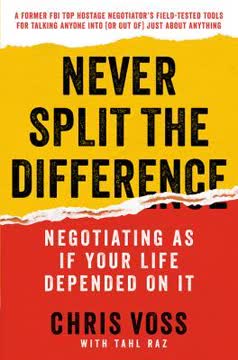
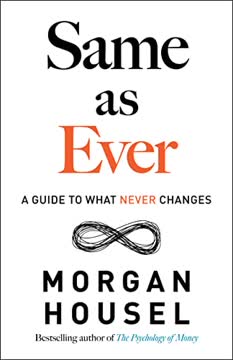
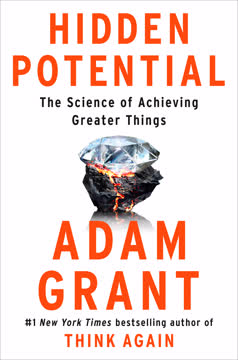

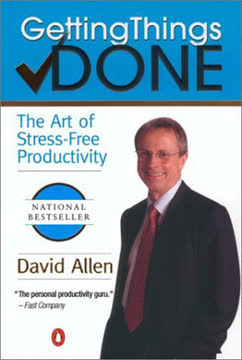
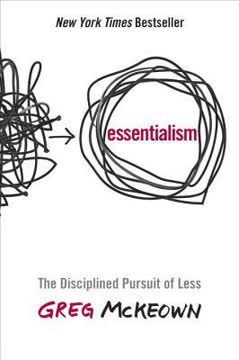

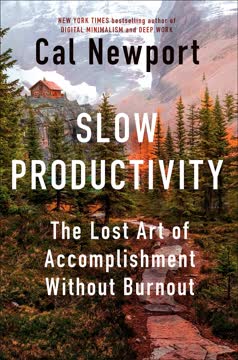


Download PDF
Download EPUB
.epub digital book format is ideal for reading ebooks on phones, tablets, and e-readers.







